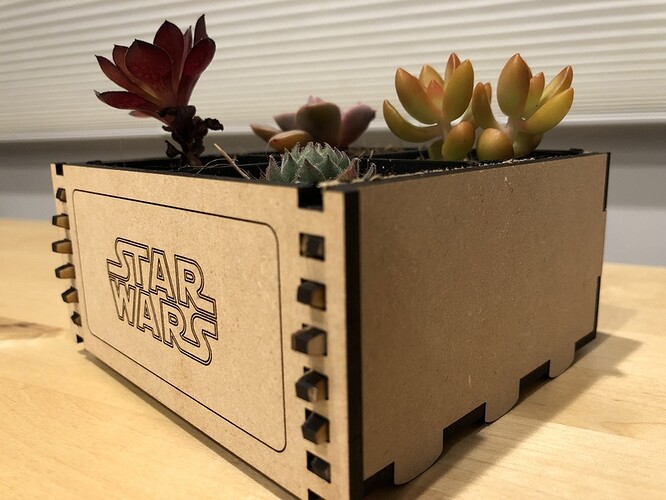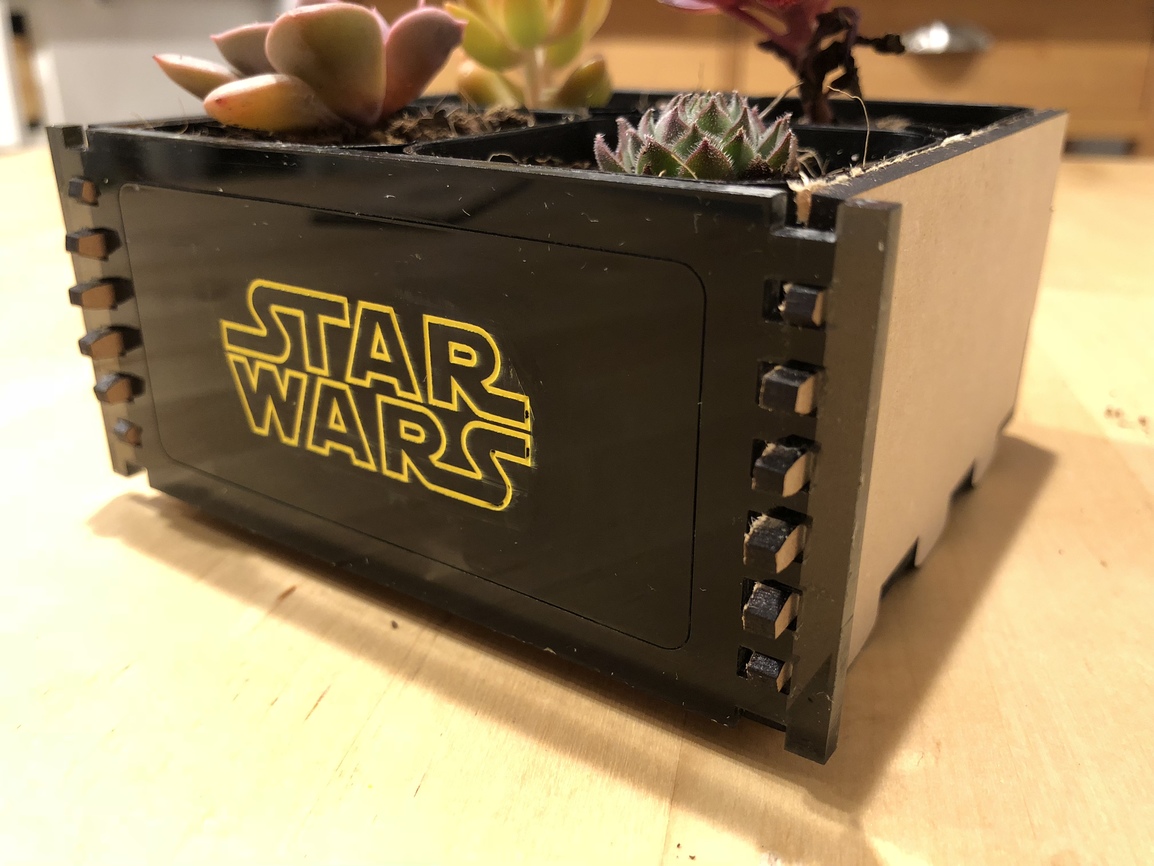This uncomplicated project brought me a bunch of joy and a crafted object I can show off at work.
My local farmer’s market sells tiny succulents in 2x2x2" plastic tubs. The tubs aren’t pretty, fall over a bunch, but do a good jobs of holding the soil and roots and moisture together for the little plants. I love those little guys, they look so juicy and full of life. Here’s are some getting their monthly watering:
I want these to last, so I need a box nice enough to put right in front of me at work. This sounds like a job for Sparky, so I went looking for box generators.
The author of this Instructables article also wrote a plugin for Inkscape - Tabbed box generator, which turned out to have the right combination of features I needed, which are:
- Don’t just spit out 493 isolated line segments.
- Measurements based on the inside dimensions, in inches.
- Kerf / cut width input, also in inches.
- Please don’t put notches on the top surface.
While I don’t LOVE inkscape, it has two useful features for this work that my other tools don’t.
- it speaks inches directly to the GF. I don’t need to pull stunts like adding a 20x12 ratio box in there
- it writes SVG directly, which shortens my edit - test - edit cycle.
I’ll post instructions on how to install the plugin in the comments, if anyone wants to know.
I took a prototyping approach to this project - make a rough cut in draftboard and only simple decorations at first to get the sizes and fit right, then iterate into maple ply as I converge. I did 6 versions in total and ended up 2 polished finished items (one for me and one for my son) and a bunch of perfectly usable protos.
Other family members are now requesting their own customised versions!
The one for the desk:
Business casual with an important motto for coders - don’t hitch your code wagon to someone else’s branch. Includes a slight lift (extended feet tabs) so I don’t moisture damage the desk, and air vents on the underside. The crumbly edge is Inkscape’s Fractalize feature, which helps to add an organic touch to the design.
I set the ‘cut width’ (related to kerf) to 0.006", which let the tabs snap together with a satisfying ‘click’. I probably didn’t even need glue for this one.
The boy’s room
A beginner owner of succulents only needs 3 slots for now, and a cute cactus logo I lifted from the internet. I took the fractal design to new depths, making every non load-bearing exposed edge have the desert feel. Also includes sturdier, taller feet and big air vents underneath.
The document
While I would certainly advise anyone to build their own using the above instructions and a dash of decorating flair, here’s the 4-slot design.
Mum the film nut
——

This design (details below) has a front reminiscent of a film cel; and uses sprocket like fingers to hold it on.





